Hello all,
Today I will cover the costumes of north central Brittany, Bro St Brieg. This is called Middle Brittany by some researchers. These are less well known than the costumes of the west, and there is not as much material available. The traditional language of Eastern Brittany was Gallo, although Breton was spoken in some places. Gallo is a northern Romance Language of France, related to French, and is rarely heard today.
https://en.wikipedia.org/wiki/Gallo_language
Bro Sant-Brieg in Breton
Paeï de Saent-Bérioec in Gallo
Pays de Saint-Brieuc in French
The traditional costume areas in the northwest do not correspond as well to the historical regions. Here is an earlier version of Creston's map, showing the traditional regions superimposed.
Goelo or Goueloù in Breton
Goëlo in French
This area has always had strong ties with Tregor to the west, and in the west and north of this region, the Tregor costume may be seen. The dividing line is the Corzic river. The Tregor costume part of Goelo is shown by the dotted line.
This example is from Guincamp.
Here is an image of an old costume from Goelo
In more recent times, three different coifs were worn,1. the plain workaday coif, 'morlisienne'. This first one is from Quintin.
The following are from Châtelaudren.
This one is from Plaintel.
2. The great coif, 'ailes de pigeon', or 'pigeon wings'. This resembles the everyday coif of Quintin, but with long lace lappets on the sides that were pinned onto the top. This is worn for ceremonial occasions.
This one is from Paimpol in the north.
This coif is especially beloved around Quintin, in the south of this region.
A couple examples from Plaintel, a bit further east. This first image shows both the large coif and the bonnet.
3. And the smaller, more urban style bonnet, edged with ruched lace. The image at the head of the article shows two women from this area wearing the bonnet.
Paimpol
Pommerit le Vicomte
Châtelaudren-Plouagat
Quintin
Here is a modern photo of a woman wearing a simplified and ineptly made version of this coif. This should not be copied. Compare the details to the images above. Also the outfit should have the opening in front.
City of Saint Brieg
St Brieuc in French
An old print of this costume, showing the grand coif with wings.
The plain everyday coif was worn here as well.
The great coif was here called surdos.
This was replaced later, except for ceremonial occasions, with the urban bonnet, rich with ruched lace, and more elaborate and sophisticated than the country versions, with broad ties. Individual examples varied in flamboyancy.
In this group we see a variety of headgear, the surdos in the center, the urban bonnet, and everyday working kerchiefs, which replaced the workaday coif.
Just a few more images of the city bonnet.
Loudia in Gallo
Loudieg in Breton
Loudéac in French
As you can see, this costume region also extends into Gernew or Cornouaille. The original coif was similar to the workday bonnet of Goelo and St Brieuc. Here are examples from Loudeac and Mur.
Later, like in most of Brittany, the coif shrank till it covered just the top rear of the head. More dressy ones were embroidered, those for daily wear were more plain.
Note that these two ladies have attached bows to the backs of their coifs.
There was, of course some regional variation. In the southeast of this area, the ties remained.
Prenessaye and Plemet
La Trinité-Porhoët
Plumieux
Medrignac
Monkontour
Moncontour in French
In this region the coif was known as bonnet carre. It took the two lappets and looped them over the back of the coif and joined them. The ties looped under the chin and were knotted on one side. These traits remained even when the coif later shrank.
Plouguenast
Lanball in Gallo
Lambal in Breton
Lamballe in French
The cities of Yffigniac [in French]; Ilfinieg in Breton, Finia in Gallo, and Langueux [in French]; Langaeg in Breton, Langioec in Gallo, form part of this region, even though they lie just east of St Brieuc. Some authors separate them as a different costume region. The area east of the city is sometimes called Penteür in Breton, Penthièvre in French.
The great coif was also worn in this region.
For more ordinary occasions, the coif was made of more plain material, the two lappets were folded in half and then wrapped around the rear of the coif and pinned into place.
Style of Yffigniac.
Style of Langueux.
Lamballe and Maroue
In Lamballe, the coif quickly became smaller and lost its ties.
I have found two images of an urban style bonnet from this area, they are extremely small, but the same conformation.
Ploenoec in Gallo
Pleneg in Breton
Pléneuf in French
In this region, the great winged coif is also worn. It tends to be arranged more vertically than in neighboring regions. It is paired with the great shawl common to north Brittany.
This is worn by dancers still today.
A petite coif was developed from the great coif in later years. Here are a couple of photos from St Alban.
For everyday work, a form of the capot was worn. It was black for cool weather, and white calico or muslin for summer.
This example is from Gouessant
In Erquy it developed a particular shape, with the the front brim elongated and reduced on the side.
For formal periods of mourning, an all enveloping cape was worn.
Lanyugon in Breton
Jugon in French
This costume region also extends into St. Malo province. The costume of this region is similar to those around it. Here are some old drawings of the Jugon costumes.
The grand coif was not unknown in this region. This example is from Plancoët.
This is what the original linen coif looked like.
Later the coif became small and perched on the back of the head, with the lappets folded over the top and a bow in back.
These examples are from the Jugon area.
These examples are from the Plédéliac area, and are similar.
In Plancoët, to the northeast, the coif developed differently. Here are images of the older coif.
Here are images of the newer version, the conette.
In the north, around St Cast and Matignon, the capot was worn for work.
For dress occasions, they wore a coif which resembled the old grand coif, but with narrow wings.
The plain coif above was worn for mourning, and the lace one below for ceremonial occasions.
And that concludes this article and the costumes of St. Brieuc. I will continue the costumes of Brittany in two more articles to come, the northeast and the southeast.
Thank you for reading, I hope that you have found this to be interesting and informative.
Roman K.
email: rkozakand@aol.com
Source material:
Victor Lhuer, 'Les Costumes Bretons', 2001
Pierre Jakez Helias, 'Coiffes et Costumes de Bretagne', Chateaulin, 1983
Josepj Jigourel & Yanna Fournier, 'Costumes de Bretagne', Brest, 2000
Bruno Helias, 'Breton Costumes', Florence, 1997
Yann Guesdon, 'Costumes de Bretagne', Quimper, 2011
Yann Guesdon, 'Coiffes de Bretagne', Spezet, 2014
R. Y. Creston, 'Le Costume Breton', Paris, 1974
Charles Freger, 'Portraits in Lace - Breton Women', London, 2015
Jean-Pierre Gonidec, 'Coiffes et Costumes des Bretons', Spezet, 2021



















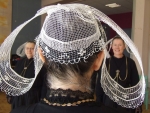







































































































































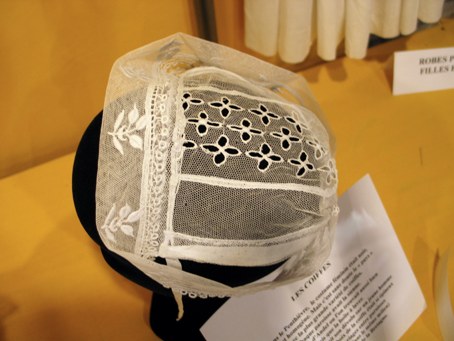



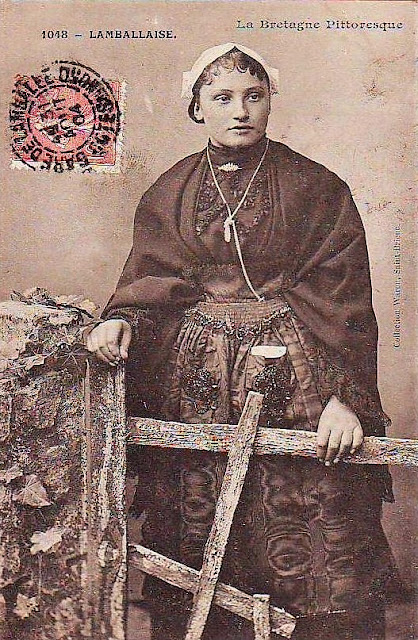

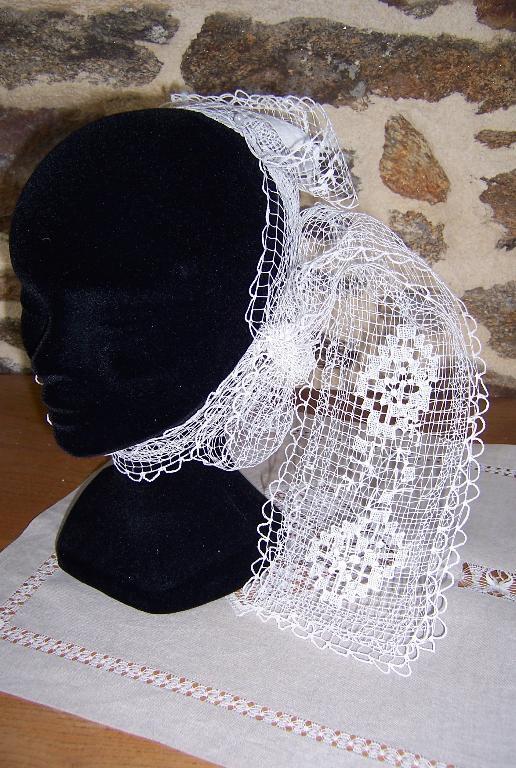




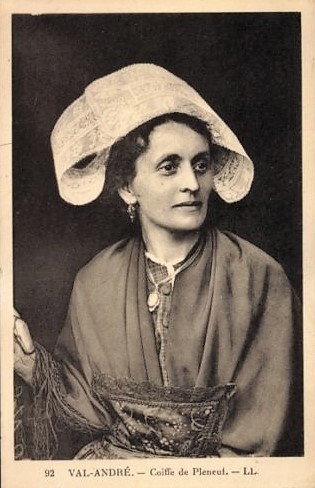



























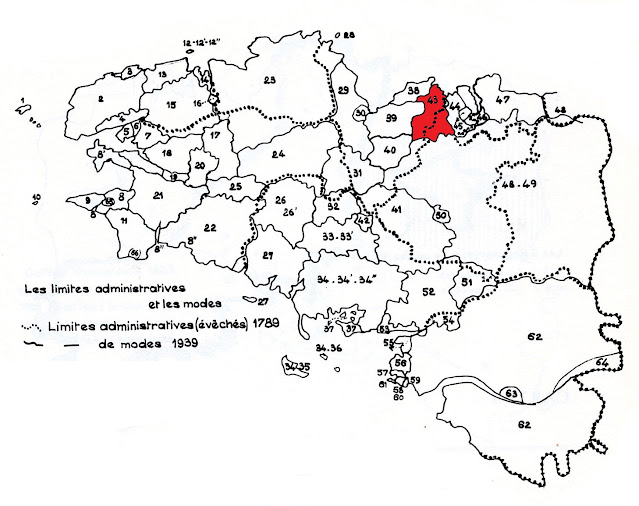









































Thanks for sharing such beautiful blog. I love to read about traditional dresses. Even kidoriman also try to provide Japanese traditional dresses.
ReplyDelete